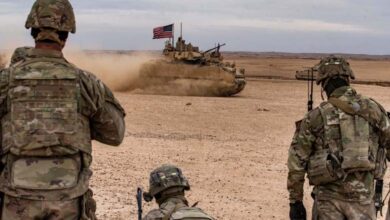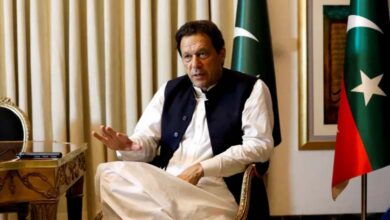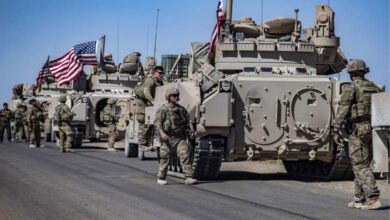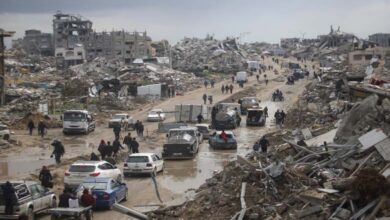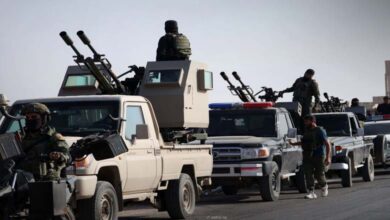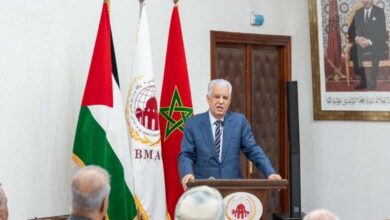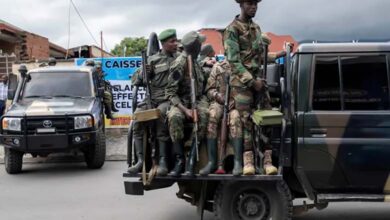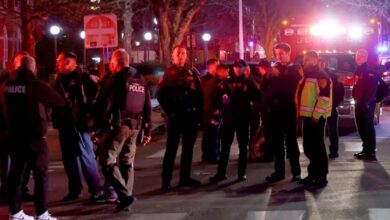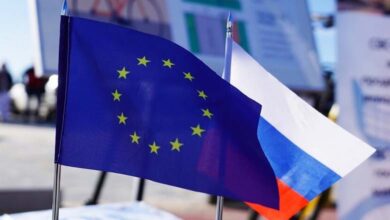A U.S. Bill Will Soon Designate the Polisario as a Terrorist Organization
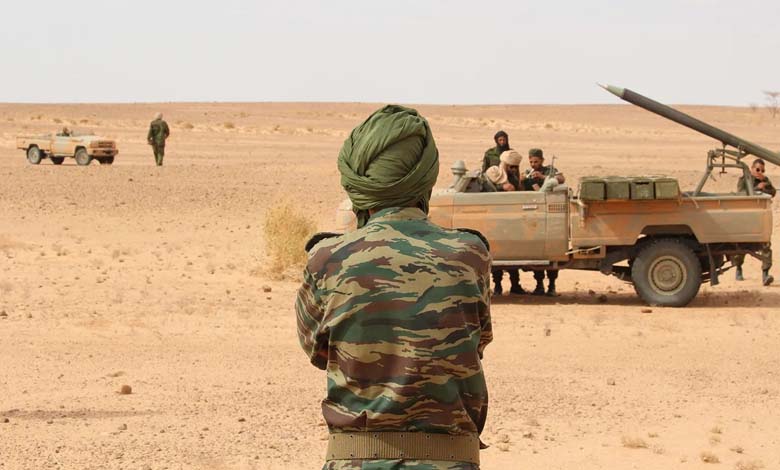
According to U.S. intelligence assessments, the threats posed by the Polisario Front are rooted in the sanctuary provided by Algeria, backed by Iranian military assistance, growing Russian influence, and a mature illicit economy in the Sahel region that overlaps with jihadist financing networks.
-
Sécurité Collapse of Polisario’s Security Apparatus
-
Sahrawis for Peace Movement: A Third Way Gains Strength as an Alternative to the Polisario
Republican Congressman Joe Wilson of South Carolina announced Thursday on his official X account (formerly Twitter) that Washington is preparing legislation to officially designate the Polisario Front as a terrorist organization. He did not specify a date but stated that former President Donald Trump would take charge of the issue, suggesting that this matter will soon resurface with greater force in the American legislative arena.
The U.S. had already hinted at the possibility of such a designation if the separatist group failed to engage seriously in resolving the Sahara conflict through the autonomy plan proposed by Rabat, which positions Moroccan sovereignty as the only viable solution. That plan is gaining increasing international recognition.
-
Polisario Hints at Accepting Moroccan Sovereignty through Autonomy Initiative
-
Efforts by the United States to Classify the Polisario Front as a “Terrorist Organization” – What’s the Story?
Wilson’s push to designate the Polisario as a terrorist group marks a significant step, reflecting rising pressure on the movement and its backers. It signals a potential shift in international dynamics surrounding the Moroccan Sahara dispute, with broad security, political, and diplomatic implications for the region.
Wilson’s statement came in response to a detailed analysis by Robert Greenway, Director of the Allison Center for National Security, and Emina Golidi, visiting fellow at the Shelby Cullom Davis Institute. Both are senior members of the Heritage Foundation. Their analysis was published in The Daily Signal on May 21.
-
Algeria Blocks Census of Tindouf Residents for Fear of Exposing Polisario Corruption
-
Algerian Concern Expressed by Polisario Over French Shift in Positions
-
Ireland Refutes Algerian and Polisario Claims Regarding Ghali’s Visit to Dublin
-
Spanish security unveils Polisario’s ties to a human trafficking and smuggling network
In April, Congressman Wilson pledged to introduce legislation designating the Algerian-backed Polisario Front as a terrorist organization—an act that sets a crucial test for Washington’s willingness to confront terrorist proxies entrenched along NATO’s southern flank.
Today, Polisario fighters are operating Iranian-made drones, sharing desert smuggling routes with Russian-linked convoys, and taxing trafficking corridors that directly fund jihadist groups across the Sahel. All of this is happening within missile range of the Strait of Gibraltar—one of the world’s most strategic maritime chokepoints.
America has previously ignored this threat. In 1988, Polisario missiles shot down two USAID aircraft, killing five Americans. The U.S. did not respond with sanctions or military action.
-
The Atlantic Initiative Foils Polisario’s Bet on Instability Strengthening
-
Renewal of confidence in the Sánchez Government deals a blow to Polisario’s bets
Wilson’s proposed bill forces a critical choice: continue tolerating this threat or finally acknowledge the Polisario as the proxy danger it has become.
Since that 1988 incident, the strategic environment has changed drastically. In November 2020, the Polisario unilaterally withdrew from the UN-mediated 1991 ceasefire. It declared the region a war zone, resumed missile attacks along Morocco’s 1,700-kilometer defense wall, and warned that consulates, airlines, and foreign firms were “legitimate targets.”
The Polisario’s threats are now built upon three interlocking pillars: Iranian military assistance, an expanding Russian influence network, and a thriving illicit economy across the Sahel that overlaps with jihadist financial streams. These are all supported by the long-standing Algerian haven, which allows the group to operate beyond the reach of Moroccan forces and international observers.
-
Iran plans to expand its influence in North Africa through the Polisario
-
Polisario Front attempts to deceive with forgeries and deception in its separatist agenda
Algeria’s military and financial support—ranging from administrative budgets to U.S. lobbying expenditures—underwrites the Polisario’s military infrastructure.
While the group currently has around 8,000 active fighters, defense assessments warn that its camps in Algeria could potentially mobilize up to 40,000. This represents a pool of manpower that jihadist recruiters have already explored.
Iran is also playing an increasingly active role in supporting the Polisario Front—a role that is now more extensively documented. This alignment dates back to at least 1980, when Polisario fighters were seen in international media holding up a portrait of Ayatollah Ruhollah Khomeini, signaling their early quest for revolutionary credibility and Iranian sponsorship.
-
Washington Proves Cooperation with Morocco, Ignores Polisario Demands
-
Lebanon Supports Morocco’s Unity, Sovereignty against ‘Polisario’
Operational cooperation has already been recorded. In 2018, the French magazine Jeune Afrique identified three Hezbollah operatives who had traveled to Tindouf as trainers. One of them—killed in an Israeli airstrike in Syria in November—had been on a U.S. sanctions list for orchestrating a 2008 attack in Karbala that killed five American soldiers.
Since then, Tehran appears to have moved from training to equipment delivery. In a 2022 public appearance, Polisario’s Interior Minister Omar Mansour stated that his fighters were “training to assemble and operate armed drones.” Thirteen months later, social media accounts linked to the Polisario published images of munitions identified by open-source researchers and weapons analysts as Iranian-made.
-
Morocco wins battle to isolate Polisario internationally
-
Polisario Leader Returns to Algeria after Spain-Morocco Row
Regional media reports connected the same Iranian munitions to strikes that killed three civilians in Smara, Morocco, in 2023. According to Western intelligence documents cited by Germany’s Die Welt, a coded call on October 23, 2023, revealed that Polisario envoy Moustafa Mohamed El Amine El Kettab congratulated a Hezbollah liaison officer on Hamas’s October 7 attack, vowing that “resistance… will ignite in Moroccan Sahara” once new funding and technology arrive.
Meanwhile, Moscow has quietly but steadily maintained contact with the Polisario Front. Since 2015, Polisario delegates have regularly attended conferences of the Russian Anti-Globalization Movement—an organization funded by the Kremlin and organized by Alexander Ionov, who was indicted by the U.S. Department of Justice in 2022 for conducting influence operations on behalf of Russia’s FSB.
-
Morocco expressed its regrets over Spain’s hosting of Polisario leader
-
Explode the Polisario’s allegations … The launch of the Dialogue Forum in Dakhla, Morocco
A 2016 photograph shows the Polisario’s representative in Moscow, Ali Salem Mohamed Fadel, standing alongside veterans from the separatist Donbas militias—the same group from which the Wagner Group later recruited many Syrian mercenaries.
Although there is no concrete evidence of direct arms transfers or military coordination between Moscow’s armed proxies and the Polisario, Wagner convoys now stationed in Mali and Niger traverse desert routes long dominated by Polisario-linked smugglers, forming a potential logistical corridor the Kremlin could activate.
The Polisario’s long-standing role in the illicit Sahel-Sahara economy now directly feeds jihadist financing and recruitment. Sahrawi leaders reportedly traffic vast quantities of cannabis eastward, cocaine northward, and Libyan arms westward, while transit “taxes” are funneled to Al-Qaeda in the Islamic Maghreb (AQIM).
-
Commitment to the Atlantic Initiative Sets the Stage for Broader Cooperation between Morocco and Sahel Countries
-
Morocco Strengthens Its Presence in Africa: Growing Military Cooperation with Ethiopia
This pattern has been flagged by the Africa Center for Strategic Studies, part of the U.S. Department of Defense, as a potential enabler for terrorist groups seeking to re-establish their foothold.
A 2010 Small Arms Survey report linked Mauritanian weapons caches to Polisario stockpiles, and a 2012 Carnegie Foundation study mapped cocaine convoys brokered by Sahrawis that later financed extremist cells. These routes still converge in Tindouf, now a desert hub where smugglers, Polisario logistics officials, and terrorist arms traffickers exchange cargo and intelligence.
This fusion is embodied by Adnan Abu Walid al-Sahrawi, a former Polisario trainee who founded the Islamic State in the Greater Sahara. He orchestrated attacks across Mali and Niger before being killed by French forces in 2021.
-
U.S. Support for Moroccan Sovereignty over the Sahara: A Consistent Strategic Choice
-
AFRICOM Commander Highlights Morocco’s Key Role in Ensuring Security in Africa
Past kidnappings and drug seizures have also traced ransom flows back to Sahrawi networks, confirming how a nominally nationalist movement now serves as a service platform for jihadist financing and manpower.
As its arsenal grows, the separatist front has escalated its rhetoric. In November 2021, the Polisario News Agency issued a warning to over a dozen Spanish companies—including Siemens Gamesa and Acciona, both employing thousands of Americans—that “the entire territory will turn into fire and war.”
The tone intensified further: first at the investment forum in Dakhla in April 2024, where a Polisario delegate warned of “loss of lives and property,” and again in April 2025, when the group declared that any investor or tourist entering the Sahara would “not be considered innocent or civilian.”
-
Moroccan Diplomatic Expulsion Reveals Algeria’s Discontent with Rabat’s Successes
-
Human rights organizations denounce the recruitment and political exploitation of children in the Tindouf camps
Iranian rhetoric provides a broader context. On December 23, 2023, IRGC Brigadier General Mohammad Reza Naqdi threatened that Tehran could “shut down the Mediterranean and the Strait of Gibraltar” if the U.S. and its allies continued their aggression in Gaza—a stark reminder that anti-Western powers view the western Mediterranean as a strategic lever. Allowing Iran to entrench a proxy presence south of Gibraltar would simply grant Tehran another pressure tool.
During both of Donald Trump’s terms, the U.S. backed Morocco’s autonomy plan as the “only viable solution” to the Moroccan Sahara conflict. But this diplomatic path must be reinforced with a security strategy that addresses the reality of an armed Polisario linked to Iranian networks, Russian intermediaries, and terrorist-smuggling networks across the Sahel.



